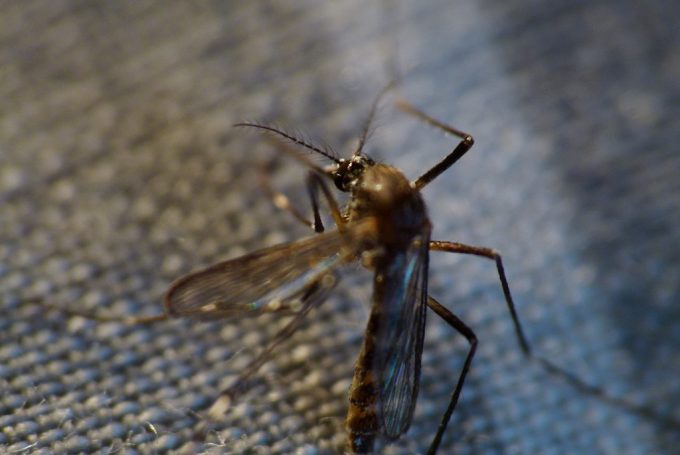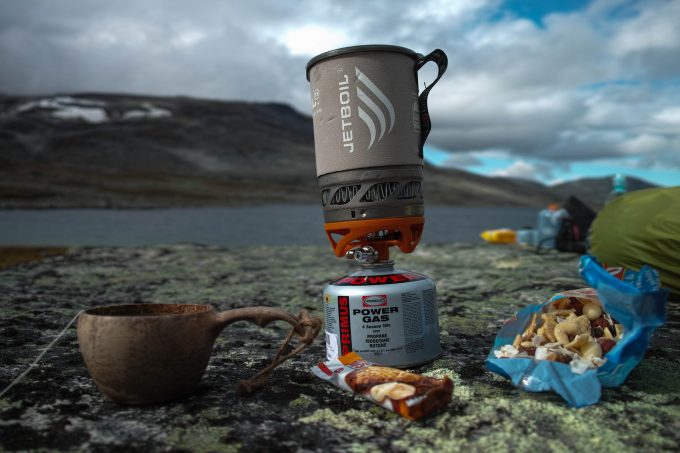Can You Eat Poison Ivy: Building a Better Immunity
If you’ve ever been outdoors, you know there are lots of toxic plants at every corner. Since you can’t always avoid them, building some sort of immunity to their negative effects can be the dream.That’s why many people have asked themselves this question: can you eat poison ivy?
Being so widely spread throughout the US and the world, and since it looks so harmless, it’s easy to touch it and get nasty outbreaks after contact, so not having to deal with that would be ideal. If you’re interested in building up your immune system against poison ivy, we’ve read all there is to on the matter, and here’s what we’ve come up with:
The science behind
The most important thing when dealing with anything as dangerous as eating poison ivy is getting your facts straight. So you need to know what actually happens when you ingest or are otherwise exposed to this plant, which is why we’ll start with:
How poison ivy works
As its name suggests, this plant is a toxic one, and the vast majority of people are affected by it. The sensitivity they develop will manifest in various degrees of severity, and that constitutes the effects to this allergy, but mostly you get some sort of skin rashes.
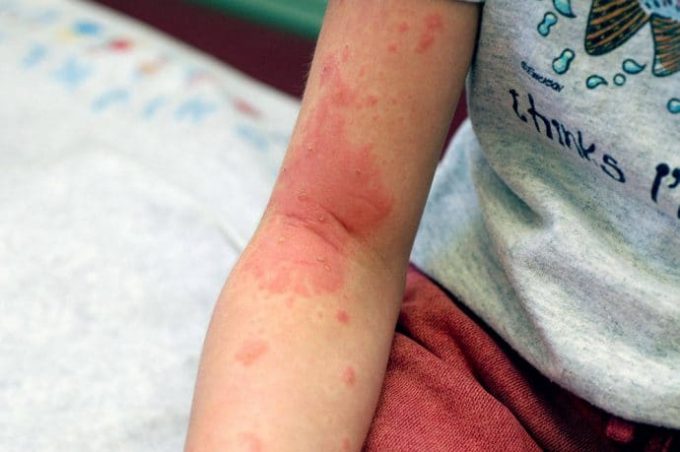
And it’s generally believed, as well as argued in some studies, that the degree of sensitivity you have to poison ivy will decrease with time. Basically, if you’re very sensitive to it when you’re a kid, you’ll eventually become less so, and the allergic effects may diminish over time.
The thing that makes you get a rash is an oily substance found in poison ivy, as well as oak and sumac, that’s called urushiol. This irritates your skin by following this approximative timeline:
- You touch the poison ivy and get urushiol on yourself.
- 24 to 48 hours later, you’ll see a rash begin to form.
- You observe redness and swelling.
- Blisters appear.
- You get itchy skin.
- The whole thing can go away 7 to 10 days later.
What can you do?
The most important thing is to take care of the clean up after you’ve touched this plant. The whole idea is to minimize the negative impact of urushiol on your skin, by trying to remove it as diligently as possible.
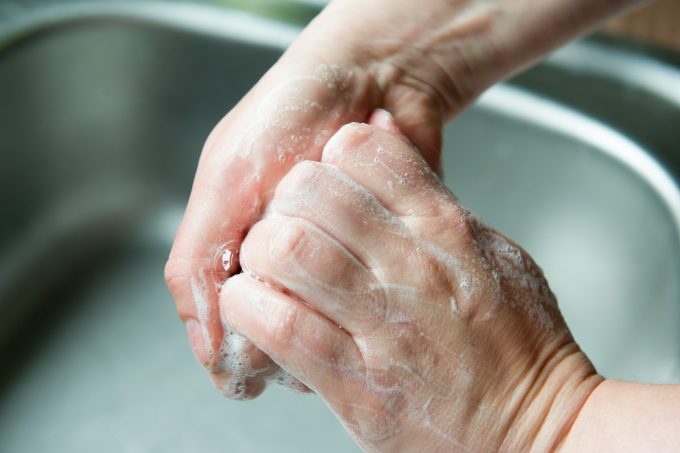
The basics tips and tricks about washing up are:
- Urushiol has a pretty long lifespan, meaning it can remain active on your equipment for days at a time.
- Just regular soap and water can work just fine.
- Take care of cleaning your clothes and other equipment too, in case urushiol got on them accidentally too. Your skin is definitely not the only one getting exposed.
- Urushiol dissolves in alcohol, so you can use that when you’re outdoors.
However, things may end up getting more serious, at which point:
- If you get to the point of developing the actual rash, you can effectively get rid of it faster with hydrocortisone or calamine cream.
- If you develop some allergic reactions, your doctor may even prescribe antihistamines.
- Other symptoms can be somewhat attenuated by cold showers and applying cool compresses locally – but never ice directly on the skin.
Can you actually build immunity to this?
We’re not advising you to expose yourself to poison ivy in order to become immune to it. Some people may suffer from dangerous allergic reactions to urushiol and not even know it, which can prove lethal even after minimal exposure.

It’s very important to contact your GP, especially if:
- You develop a fever
- Your symptoms don’t get any better with time, even after more than a week.
- The rash begins to spread to other places on your body.
- The blisters begin to leak.
And of course, it’s wise to apply prevention measures and to avoid future contact that might aggravate your rash, like:
- Staying far away from this poisonous plant.
- Dressing appropriately when going outdoors, with long sleeves and trousers.
- Using specific products available in drugstores designed to fight against urushiol. Even some deodorants act as a repellant because they contain a compound called aluminum chloralhydrate.
- Identifying the poison ivy plant correctly. This plant looks like a vine and its leafs come in three, their edges being either smooth or not, and its fruits look like white berries.
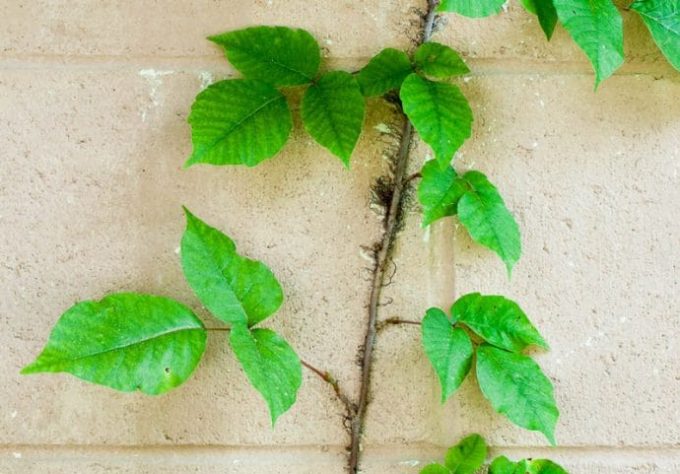
Plus, it’s wise to understand which the common myths are, to counteract them:
- Once you get a rash, that can’t be transmitted to another person – FALSE.
- Your skin becomes irritated just at the place of contact with the poison ivy – FALSE.
- You can’t spread the rash when you scratch it – FALSE.
- The pus doesn’t contribute to the spreading of the irritation – FALSE.
With that being said, it’s important to see what science says on how to build immunity to poison ivy.
The year was 1987
There are currently different studies and experiments which prove that people who have allergies to different substances can become immune if they get exposed to them in a controlled environment. This has been proven to work with peanut allergy, but the question remains: can it work with other stuff too?
For instance, if you start eating poison ivy a little every day, you won’t be affected as much. Is this fact or fiction? Well, research as old as 1987 said that’s not the case. The article published in Archives of Dermatology showed that once you get poison ivy in your mouth, the allergic reactions are increased exponentially.
The year was 2006
Conversely, the American College of Allergy, Asthma, and Immunology has published a news release in 2006 stating that you can trick your body to become immune to poison ivy. This news comes after over a decade of testing more than 100 people with serious allergies.

The subjects ate small pieces of leaves on a constant basis and took tests which showed their sensitivity to poison ivy and urushiol improve.Even more, the vast majority of subjects said they didn’t experience skin irritations as often as before, and when they did, this was definitely lower in frequency and intensity.
The year is 2018
These tests were done in the past, and today we still don’t have any certainties. The only things the entire medical community can agree upon are:
The development of future pills
While it’s hoped that in the future, scientists can isolate the active ingredient in poison ivy and create an antidote from urushiol itself, that hasn’t happened yet. And most doctors you ask will tell you that it’s not wise to start eating the thing.
The need for continuous research
Plus, the whole 2006 study needs further research seeing as experiments done on just 100 or so people, albeit on over 10 years, aren’t conclusive. We need a bigger group of people tested before seeing if ingesting urushiol can help beat future allergic reactions.

The use of some substances
Some current studies show that cyclosporine can actually be the cure for dermatitis caused by poison ivy and avoiding it in the future. This substance has been used as an immunosuppressor for quite some time and for various afflictions.
Although it has some serious side effects, it works by inhibiting the action of some white blood cells called T-lymphocytes. Basically, it puts a stop on your immune system reaction against urushiol and takes the horns.
Have people really tried this?
Some people tried becoming immune to poison ivy by eating it or getting exposed to it in different ways and still lived to tell the tale. The internet says there are various ways in which you can do that:
The hands-on approach
We’ve seen Youtube videos where people get really hands-on on the whole matter. They just put their hands on the poison ivy or poison sumac plants, rip a few their leaves and simply place them in their mouths.
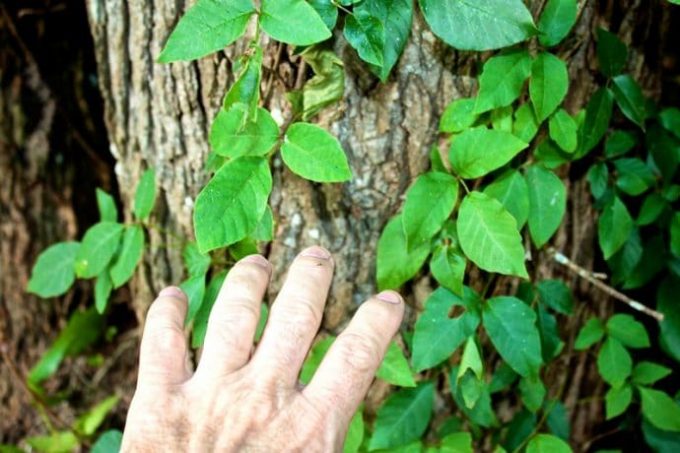
The danger
Swallowing it directly is what they do, but that can prove harmful since you’re getting their entire digestive system, apart from their hands, exposed to urushiol. At this point, there are a lot of contact points between their bodies and urushiol,
This means the rashes may appear on more portions of their body. That can only increase the risk of the whole allergic reactions becoming dangerous to the point of deadly.
The tweezers approach
If you’re more worried about the negative effects of getting poison ivy and urushiol on your skin, you can try building immunity by followingthis steps:
- Wait til spring.
- Grab tweezers and rip a small bit of leaf.
- Place it carefully inside a small piece of bread.
- Make a small ball out of the bread, hiding the piece of poison ivy leaf inside.
- Take care not to touch your hands, lips or inside of the mouth with the ivy.
- Swallow it with water like a pill.
- Do this for 7-14 days, constantly increasing how much of the leaf you’re eating.
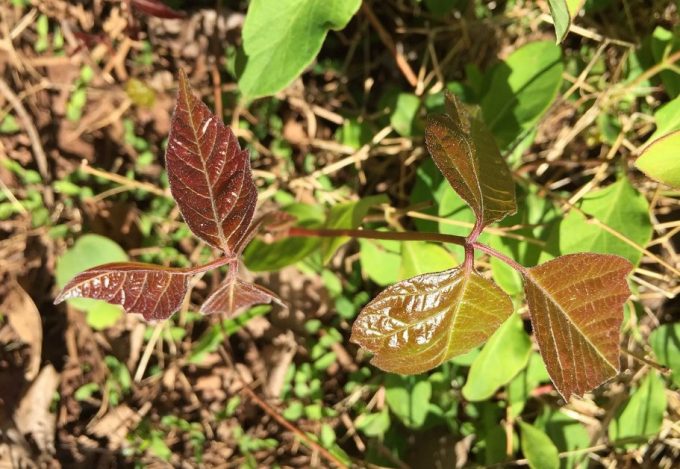
The alternative
This may be a safer approach. There’s also a variation to it when you’re not using any bread or anything else to hide the piece of leaf in, and just place it directly in your mouth, then swallowing it whole with as little chewing as possible.
The danger
While there’s a clear advantage of minimizing the contact with your hands by using the tweezers, the dangers still remain when urushiol comes in contact with your digestive system. When you use the bread pill, the urushiol is only released in your stomach, but at this point, the gastric juice may fight it better.

Conversely, the gastric wall is very sensitive, and if you’re seriously allergic to urushiol without knowing it, the irritation at this level can be really bad.
The everything on, but wash carefully approach
Some people who have gotten poison ivy rashes before swear they were cured by washing properly immediately after exposure. So the things to account for are:
- Wash carefully even if poison ivy touched just your clothes. Contact dermatitis from this can occur regardless of any mediator present.
- It doesn’t matter what you wash with: soap, anti-bacterial solution, dish detergent or straight on ananti-urushiol
- Be careful to remove any urushiol stain. This substance is active for very long, so if you miss some spots or stains between your fingers, for instance, you can still get a rash.
- Use a washcloth to scrub carefully and make sure that all traces of urushiol are gone.
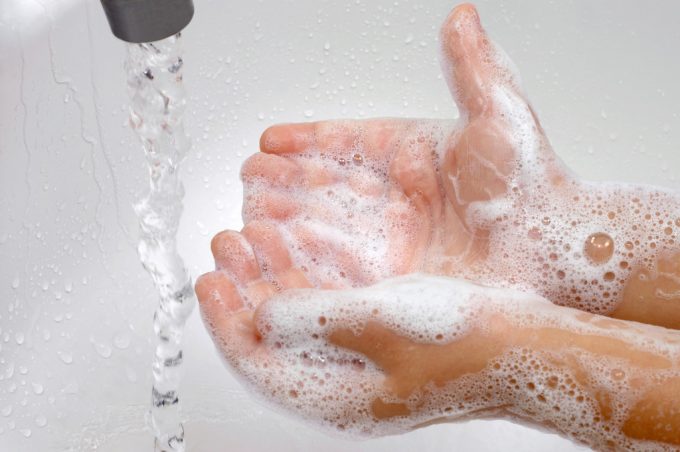
The danger
Constantly exposing yourself to the stuff this way is said to build your immunity on the long-term, provided you can wash thoroughly. On the other hand, you’re still getting plenty of unwanted contact between your skin and poison ivy, and that can trigger your allergic reactions.
If you can’t get clean fast and completely, urushiol may remain active on your skin, and you may transfer it to other pieces of equipment and even worse, to other people.
The no hands, no nothing yet still becoming immune approach
Since there’s lots of urushiol in mangoes too, some people swear they can become immune to poison ivy by eating these fruits. Urushiol is found in the skin, leaves, and bark of mangoes, and all that’s edible. Basically, you can avoid any sort of poison ivy outbreaks without even touching the stuff.
The danger
This method is probably the safest since you’re getting the least amount of urushiol into your system. So if you’re going to try anything, this can be it.
What the Internet says
With all that in mind, we’ve scoured the Internet far and wide to find out people’s reactions to these methods that involve eating poison ivy. We’ve also read quite a few personal stories, and we’ve thought to share the most interesting ideas and experiences with you.

The people who think it’s all fake
Amongst the various opinions online, some people say you can’t become immune to poison ivy by eating it because:
Your throat closes up
The mouth is very vascularized, and that means the increased blood flow will increase the rate of urushiol absorption. That means the irritation can manifest itself topically, making your whole mouth and throat swell, which leads to you not breathing anymore.
Doctors don’t recommend it
Since you don’t have the exact stats and data on how allergic you actually are, nor your sensitivity threshold to urushiol, you won’t know exactly how much of the plant you can ingest. So it’s not safe because not knowing the quantities can trigger a severe anaphylactic reaction, which leads to shock and death.
Internal organs are more sensitive
Poison ivy can trigger extremely severe rashes on the skin, but the internal organs are made from softer, more vascularized tissue. That means the absorption of urushiol is drastically increased, so the irritation, swelling, and local abscesses can be even worse.

Without any air contact to dry out the rash, the moist environment will only aggravate the situation, thus leading to a fatal outcome. In fact, when poison ivy comes in contact with your eyes and mouth, people are generally advised to seek medical attention immediately.
You get rashes were the sun don’t shine
Although there are some evidence that people can incrementally increase the dosage of poison ivy exposure until they reach some sort of immunity, the side effect is that you get irritations when excreting it. Even if you take pills prescribed by a doctor, the same thing will happen, which is why the whole thing remains to be further tested.
In case you need more on this topic, this reaction is called pruritus ani and it’s an irritation of the anus that’s not just unpleasant, but dangerous as well.
The people who might think it can work
The fault-finders of the eating poison ivy practice have their critics too. It all boils down to trying it because although the theory says ingesting it is bad, the practice of it says otherwise.
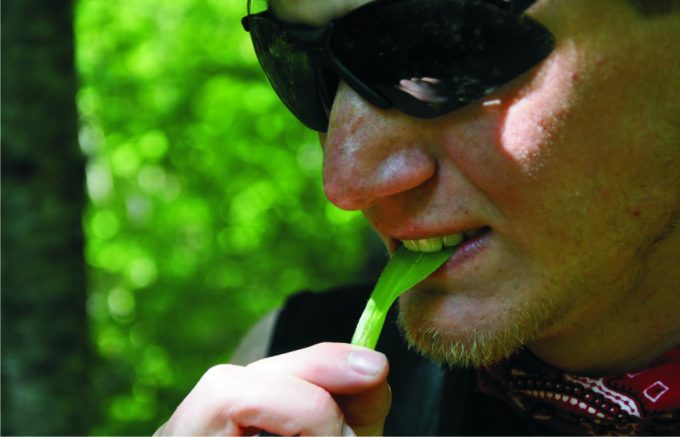
We’ve seen people do it
There are lots of people online swearing they’ve actually eaten poison ivy before and survived. They think that’s why they’ve become immune and if you don’t believe them, they have the online posted videos to prove it. There are also written experiences on the matter, just think of Euell Gibbons, and even 8-week courses to get you rid of the constant poison ivy irritations.
Testing says it works
There have been some tests done by now, like the one we’ve told you about, which support that it’s a sound enough practice. Dermatological tests show that getting urushiol in your system decreases the chances of you getting a rash when you stumble upon poison ivy in the wild. The only downside is that this newly built immunity doesn’t last forever, so you’ll just have to repeat the process every year.
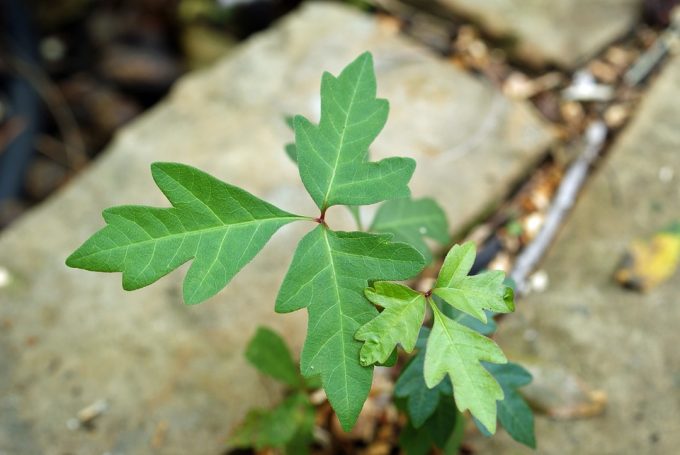
There’s a lot of lore on this
Some people say they have old relatives and friends who claim they used to eat one poison ivy leaf each spring. The purpose was to gradually become less sensitive to it, and that’s typically what happened for them.
Will you do it?
After taking all these things into account, we’re curious if you’ll do it. We’re not encouraging you to in any way, but we want to hear your thoughts on the matter.
What approach seems the soundest? Have you tried increasing exposure to other things you’re allergic to? Let us know your experience, the comments are right below!

